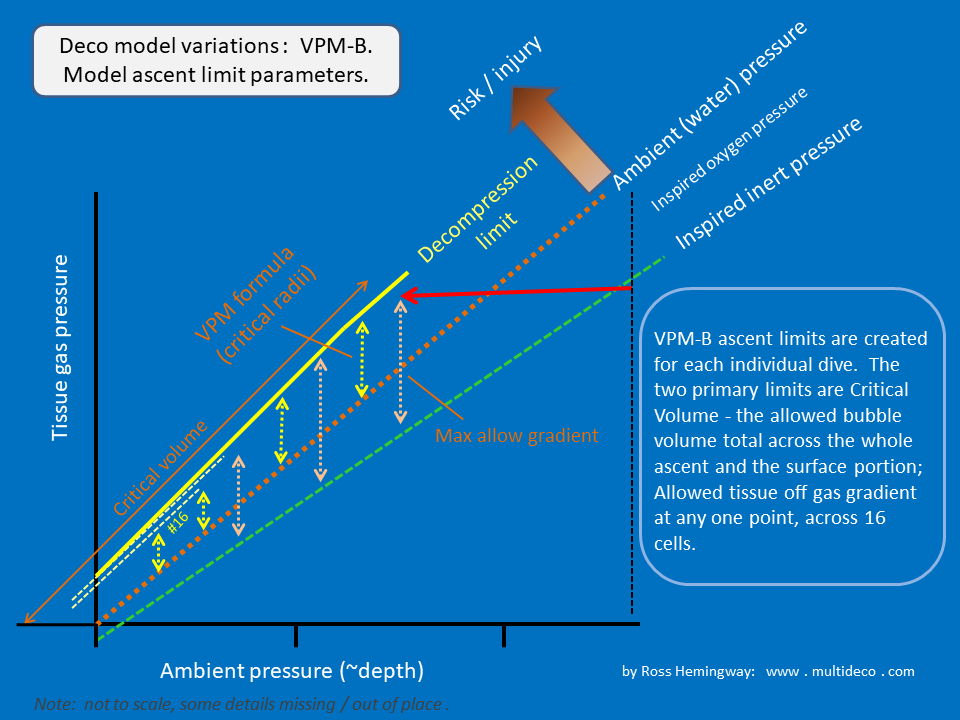Interestingly, to me, the Navy 2008 profile is an identical runtime to VPM-B but with the shallower stops extended dramatically. I suspect that if the NEDU test had been run on those 2 schedules, the results would have been the same but we might spend a 1000 posts less arguing about actual vs "fudged" profiles etc etc.
It also seems that the conservancy settings on VPM seem to less about adding a padding factor (like lowering GF High would achieve) and more about undoing the tissue stress from the deeper stops. So why overdo the deeper stops to start with?
The Nedu test was looking at VVAL18 model and BVM(3) model profiles. Neither of these can generate anything close to a ZHL-C or VPM-B dive. Same in reverse; ZHL-C and VPM-B cannot generate VVAL18 or BVM(3) profiles.
nedu graphs
***************
GF on ZHL lets you make some very big changes. So much, that It allows you to completely abandon the underlying ZHL models concepts. The way its used today - that's pretty much what happens.
Conversely, VPM-B conservatism will always make a VPM-B style plan with the same model attributes - no escaping that. But taken too far, it looses connection and context to the pressures and stresses its trying to manage - hence faked up +7 profiles are rubbish.
Adding more conservatism to VPM-B, lowers the stress across the whole dive, and reduces the surface starting pressure - quite evenly too.
Last edited:






